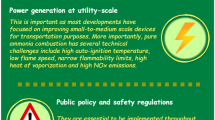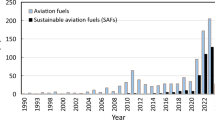Abstract
The operation of modern vehicles requires the introduction of package of fuel additives to ensure the required level of operating characteristics, some of which cannot be achieved by current oil refining methods. The use of additives allows flexibility of impact on the properties of the fuel at minimal cost, increasing the efficiency and environmental safety of vehicles. Among the wide assortment of additives available on the world market, many are surfactants. It has been shown that the introduction of some surfactants into gasoline concurrently reduces losses from gasoline evaporation, improves the mixture formation during injection of gasoline into the engine and improves detergent and anticorrosive properties. The surfactant gasoline additive that provides significant improvement in the quality of gasoline used and environmental and operating characteristics of vehicles has been developed and thoroughly investigated. The results of studies confirming the efficiency of the gasoline additive application are herein presented.



Similar content being viewed by others
References
Anderson LG (2015) Effects of using renewable fuels on vehicle emissions. Renew Sust Energ Rev 47:162–172. doi:10.1016/j.rser.2015.03.011
Andre M, Joumard R, Hickman AJ, Hassel D (1994) Actual car use and operating-conditions as emission parameters—derived urban driving cycles. Sci Total Environ 147:225–233
Bennett J (2014) Advanced fuel additives for modern internal combustion engines. In: Folkson R (ed) Alternative fuels and advanced vehicle technologies for improved environmental performance. Towards zero carbon transportation. Woodhead Publishing Ltd, UK, pp 165–194
Boulter PG, Latham S (2009) Emissions factors 2009: Report 5—a review of the effects of fuel properties on road vehicle emissions. TRL Report PPR358, TRL Limited, Wokingham
Cutnell JD, Johnson KW (2009) Physics. John Wiley & Sons Inc, Hoboken, p 375
Daehn GS (2014) Sustainable design and manufacture of lightweight vehicle structures. In: Folkson R (ed) Alternative fuels and advanced vehicle technologies for improved environmental performance. Towards zero carbon transportation. Woodhead Publishing Ltd, UK, pp 433–461
Danilov AM (2012) Development and use of fuel additives during 2006–2010. Chem tech fuels oil 47(6):470–484
Dardiotis C, Martini G, Marotta A, Manfredi U (2013) Low-temperature cold-start gaseous emissions of late technology passenger cars. Appl Energ 111:468–478. doi:10.1016/j.apenergy.2013.04.093
Demirbas A, Balubaid MA, Basahel AM, Ahmad W, Sheikh MH (2015) Octane rating of gasoline and octane booster additives. Petrol Sci Technol 33(11):1190–1197. doi:10.1080/10916466.2015.1050506
Faiz A, Weaver CS, Walsh PM (1996) Air pollution from motor vehicles: standards and technologies for controlling emissions. The World Bank, Washington
French EC, Martin RL, Dougherty JA (1993) Corrosion and its inhibition in oil and gas wells. In: Raman A, Labine P (eds) Reviews on corrosion inhibitor science and technology. NACE International, Houston, pp II-1-1–II-1-25
Giakoumis EG (2012) A statistical investigation of biodiesel effects on regulated exhaust emissions during transient cycles. Appl Energ 98:273–291. doi:10.1016/j.apenergy.2012.03.037
Gibbs L, Anderson B, Barnes K, Engeler G, Freel J, Horn J, Ingham M, Kohler D, Lesnini D, Macarthur R, Mortier M, Peyla D, Taniguchi D, Tiedemann A, Welstand S, Bernhardt D, Collini K, Farr A, Jones J, Lind J, Tom C (2009) Motor gasolines technical review (FTR-1). Chevron Corporation, USA
Groysman A (2014) Corrosion in systems for storage and transportation of petroleum products and biofuels: identification, monitoring and solutions. Springer, Netherlands
Han J, Forman GS, Elgowainy A, Cai H, Wang M, Divita VB (2015) A comparative assessment of resource efficiency in petroleum refining. Fuel 157:292–298. doi:10.1016/j.fuel.2015.03.038
Hill J, Nelson E, Tilman D, Polasky S, Tiffany D (2006) Environmental, economic, and energetic costs and benefits of biodiesel and ethanol biofuels. Proc Natl Acad Sci U S A 103(30):11206–11210. doi:10.1073/pnas.0604600103
Hunt MW (1998) U.S. gasoline detergent additives. Colin A. Associates Inc, New-York, Houston
International fuel quality standards and their implications for Australian standards: Final Report (2014). Hart Energy Research & Consulting, USA
Isenberg G, Edinger R, Ebner J (2002) Renewable energies for climate benign fuel production—powering fuel-cell vehicles. Environ Sci Pollut R 9(2):99–104. doi:10.1007/BF02987453
Janna WS (2000) Engineering heat transfer, 2nd edn. CRC Press LLC, USA, p 319
Kapustin VM, Chernysheva EA (2010) The development of petroleum refining and petroleum chemistry in Russia. Petrol Chem 50(4):247–254. doi:10.1134/S0965544110040018
Karonis D, Lois E, Stournas S, Zannikos F (1998) Correlations of exhaust emissions from a diesel engine with diesel fuel properties. Energy and Fuels 12(2):230–238. doi:10.1021/ef9700588
Kozak M, Nijak D, Merkisz J (2014) Predicting exhaust emission changes resulting from local improvement of city bus traffic in Poznan. WIT Trans Ecol Envir 179(2):1021–1032. doi:10.2495/SC130872
Li DD (2013) Crucial technologies supporting future development of petroleum refining industry. Chinese J Catal 34(1):48–60. doi:10.1016/S1872-2067(11)60508-1
Lopez-Aparicio S, Hak C (2013) Evaluation of the use of bioethanol fuelled buses based on ambient air pollution screening and on-road measurements. Sci Total Envir 452:40–49. doi:10.1016/j.scitotenv.2013.02.046
Lund H, Kempton W (2008) Integration of renewable energy into the transport and electricity sectors through V2G. Energ Policy 36(9):3578–3587. doi:10.1016/j.enpol.2008.06.007
Magaril E (2011) Improving car environmental and operational characteristics using a multifunctional fuel additive. WIT Trans Ecol Envir 147:373–384. doi:10.2495/AIR110351
Magaril E (2013a) Improving the efficiency and environmental safety of gasoline engine operation. WIT Trans Built Env 130:437–485. doi:10.2495/UT130341
Magaril E (2013b) The influence of carbonization elimination on the environmental safety and efficiency of vehicle operation. Int J Sustain Dev Plan 8(2):231–245. doi:10.2495/SDP-V8-N2-231-245
Magaril E (2014) The solution to strategic problems in the oil refining industry as a factor for the sustainable development of automobile transport. WIT Trans Ecol Envir 190(2):821–832. doi:10.2495/EQ140762
Magaril E (2015a) Carbon-free gasoline engine operation. Int J Sustain Dev Plan 10(1):100–108. doi:10.2495/SDP-V10-N1-100-108
Magaril E (2015b) Increasing the efficiency and environmental safety of vehicle operation through improvement of fuel quality. Int J Sustain Dev Plan 10(6):880–893. doi:10.2495/SDP-V10-N6-880-893
Magaril ER (2015c) Reducing gasoline loss from evaporation by the introduction of a surface-active fuel additive. WIT Trans Built Env 146:233–242. doi:10.2495/UT150181
Magaril E (2016) Improvement of the environmental and operational characteristics of vehicles through decreasing the motor fuel density. Environ Sci Pollut R 23(7):6793–6802. doi:10.1007/s11356-015-5920-6
Magaril ER, Magaril RZ (2010) Motor fuels, 2nd edn. KDU, Moscow, In Russian
Mark J, Morey C (2000) Rolling smokestacks: cleaning up America’s trucks and buses. UCS, Massachusetts
Miksic BA (1993) Use of vapor phase inhibitors for corrosion protection of metal products. In: Raman A, Labine P (eds) Reviews on corrosion inhibitor science and technology. NACE International, Houston, pp II-16-1–II-16-13
Mintz M, Han J, Burnham A (2014) Alternative and renewable gaseous fuels to improve vehicle environmental characteristics. In: Folkson R (ed) Alternative fuels and advanced vehicle technologies for improved environmental performance. Towards zero carbon transportation. Woodhead Publishing Ltd, UK, pp 90–116
Mohammad S, Mansooreh S, Reza B (2013) A brief review of methyl tert-butyl ether (MTBE) removal from contaminated air and water. Res J Chem Environ 17(5):90–97
Nikitina EA, Emel’yanov VE, Krylov IF, Fedorova AV (2006) Detergent additives to automotive gasolines. Chem Tech Fuels Oil 42(1):30–34. doi:10.1007/s10553-006-0023-1
Oudijk G (2010) The rise and fall of organometallic additives in automotive gasoline. Environ Forensics 11(1-2):17–49. doi:10.1080/15275920903346794
Pearson RJ, Turner JWG (2014) Using alternative and renewable liquid fuels to improve the environmental performance of internal combustion engines: key challenges and blending technologies. In: Folkson R (ed) Alternative fuels and advanced vehicle technologies for improved environmental performance. Towards zero carbon transportation. Woodhead Publishing Ltd, UK, pp 52–89
Polimeni A, Vitetta A (2014) Vehicle routing in urban areas: an optimal approach with cost function calibration. Transportmetrica B-Transport Dynamics 2(1):1–19. doi:10.1080/23249935.2013.826747
Poling BE, Prausnitz JM, O’Connell JP (2001) The properties of gases and liquids, 5th edn. McGraw-Hill, New York
Pollet BG, Staffell I, Molkov V (2014) Fuel-cell (hydrogen) electric hybrid vehicles. In: Folkson R (ed) Alternative fuels and advanced vehicle technologies for improved environmental performance. Towards zero carbon transportation. Woodhead Publishing Ltd, UK, pp 685–733
Reid RC, Prausnitz JM, Poling BE (1987) The properties of gases and liquids, 4th edn. McGraw-Hill, New York
Saber AY, Venayagamoorthy GK (2011) Plug-in vehicles and renewable energy sources for cost and emission reductions. IEEE T Ind Electron 58(4):1229–1238. doi:10.1109/TIE.2010.2047828
Schill WP, Gerbaulet C (2015) Power system impacts of electric vehicles in Germany: charging with coal or renewables? Appl Energ 156:185–196. doi:10.1016/j.apenergy.2015.07.012
Somorjai GA, Li Y (2010) Introduction to surface chemistry and catalysis, 2nd edn. John Wiley & Sons Inc, Hoboken, p 285
Srivastava SP, Hancsók J (2014) Fuels and fuel-additives. John Wiley & Sons Inc, Hoboken
Stroe C-C, Panaitescu’ VN, Ragazzi M, Rada EC, Ionescu G (2014) Some considerations on the environmental impact of highway traffic. Rev Chim 65(2):152–155
Thomas CES (2009) Transportation options in a carbon-constrained world: hybrids, plug-in hybrids, biofuels, fuel cell electric vehicles, and battery electric vehicles. Int J Hydrogen Energ 34(23):9279–9296. doi:10.1016/j.ijhydene.2009.09.058
Torregrosa-Jaime B, Bjurling F, Corberan JM, Di Sciullo F, Paya J (2015) Transient thermal model of a vehicle’s cabin validated under variable ambient conditions. Appl Therm Eng 75:45–53. doi:10.1016/j.applthermaleng.2014.05.074
Torretta V, Rada EC, Panaitescu V, Apostol T (2012) Some considerations on particulate generated by traffic. UPB Scientific Bulletin, Series D: Mechanical Engineering 74(4):241–248
Worldwide Fuel Charter (2013) 5th edn. Belgium, Belgium
Yin YF, Lawphongpanich S (2006) Internalizing emission externality on road networks. Transport Res D-Tr E 11(4):292–301. doi:10.1016/j.trd.2006.05.003
Zannis TC, Hountalas DT, Papagiannakis RG, Levendis YA (2009) Effect of fuel chemical structure and properties on diesel engine performance and pollutant emissions: review of the results of four European research programs. SAE International journal of fuels and lubricants 1(1):384–419. doi:10.4271/2008-01-0838
Acknowledgment
This research was supported by Act 211 Government of the Russian Federation, contract No. 02.A03.21.0006.
Author information
Authors and Affiliations
Corresponding author
Additional information
Responsible editor: Philippe Garrigues
Rights and permissions
About this article
Cite this article
Magaril, E., Magaril, R. Improving the environmental and performance characteristics of vehicles by introducing the surfactant additive into gasoline. Environ Sci Pollut Res 23, 17049–17057 (2016). https://doi.org/10.1007/s11356-016-6900-1
Received:
Accepted:
Published:
Issue Date:
DOI: https://doi.org/10.1007/s11356-016-6900-1




